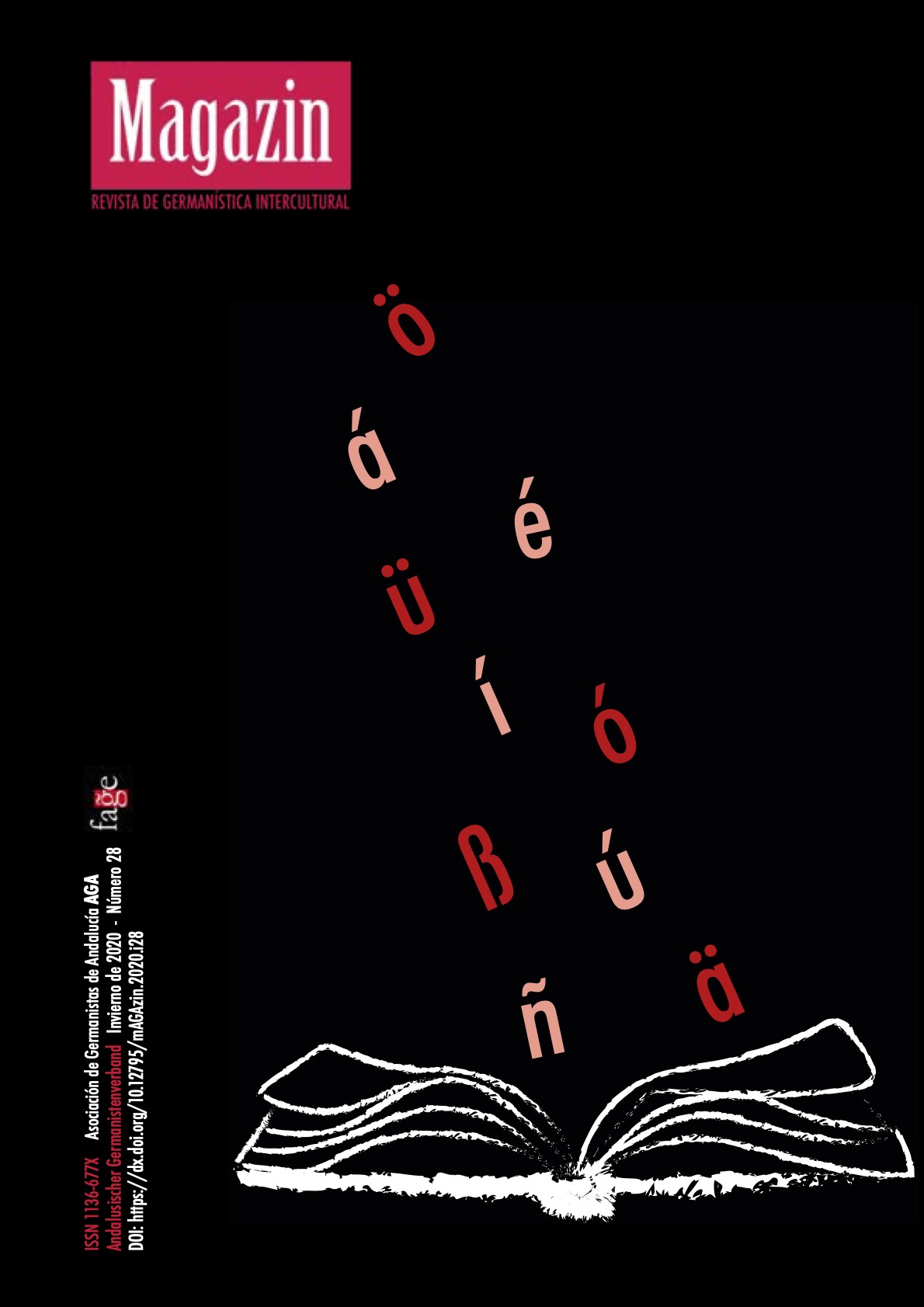The Idylls of the Petrified World: Theodor Fontane’s Stine or the Siege of Inhumanity
DOI:
https://doi.org/10.12795/mAGAzin.2020.i28.01Keywords:
Theodor Fontane, Prussianism, German literature, Realism in Germany, StineAbstract
The present article seeks to reflect on the social, political and ideological mechanisms in the period of the German empire’s foundation (Gründerzeit) through a little-studied novel of Theodor Fontane’s literary production: Stine. Through this novel, the author exposes the inherent contradictions of the incipient German capitalism and its union with a central element of the politics of his time, Prussianism. Born out of the reactionary landed and aristocratic social strata, the Prussian ideology is an important element to understand Germany’s imperialist project and its ultimate consequences, manifested in National Socialism. In this sense, the article proposes a reading, through literature, of the origins of this political tendency in the national life of the German country. Through this analysis, the notion of realism in the specifically German literary field is also problematized.
Downloads
References
Bramsted, E. K. (1964).Aristocracy and the middle-classes in Germany: Social types in German literature, 1830-1900.University of Chicago Press.
Fontane, T. (1973). Stine. En Romane und Erzählungen in acht Bänden. Band 5. Aufbau-Verlag.
Hanraths, U. (1989). Das Andere bin ich. Zur Konstruktion weiblicher Subjektivität in Fontanes Romanen. En H. L. Arnold (Ed.), Theodor Fontane (pp. 164-172). Text + Kritik.
Hewitson, M. (2008). Wilhelmine Germany. En J. Ratallack (Ed.), Imperial Germany 1871-1918 (pp. 40-61). Oxford University Press.
Hübinger, G. (1993). Liberalismus und Individualismus im deutschen Bürgertum. Neue Folge, 40(1), 60-78.
Jung, W. (2011).Vormärz y Biedermeier, realismo y época de la fundación del imperio. En M. Vedda, (Ed.), El realismo en la Literatura Alemana. Nuevas interpretaciones (pp. 7-34). Editorial de la Facultad de Filosofía y Letras de la Universidad de Buenos Aires.
Krause, E. H. y Hicks, S. V. (1995). Illusion and dissolution: Fontane’s Stine. German Studies Review, 18(2), 223-240.
Lepenies, W. (2008).La seducción de la cultura en la historia alemana. Trad.: Jaime Blasco Castiñeyra. Ediciones Akal.
Lerman, K. A. (2008). Bismarckian Germany. En J. Ratallack (Ed.), Imperial Germany 1871-1918 (pp. 18-39). Oxford University Press.
Lukács, G. (1971). Nueva historia de la literatura alemana. Trad.: Aníbal Leal. Editorial La Pleyade.
Lukács, G. (2019). Sobre el prusianismo. Trad.: Mariela Ferrari. Inter Litteras, 1, 148-172. https://doi.org/10.34096/interlitteras.n1.7227
Marx, K. (1982). Escritos de juventud. Trad.: Wenceslao Roces. Fondo de Cultura Económica.
Schissler, H. (1980). Die Junker. Zur Sozialgeschichte und historischen Bedeutung der agrarischen Elite in Preußen. Preußen im Rückblick,6, 89-122.
Published
How to Cite
Issue
Section
License
Self-archiving policy
Romeo Blue Journal (applied)
Only editor PDF can be archived
Author cannot archive the pre-print version
Author cannot archive the postprint version
- Abstract 180
- PDF (Español (España)) 106
- EPUB (Español (España)) 15
- HTML (Español (España)) 39




